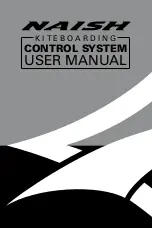
carburetor icing, since the use of carburetor heat causes a reduction in
power which may be critical in case of a go-around. Full throttle operation
with carburetor heat on can cause detonation.
The amount of flap used during landings and the speed of the aircraft at
contact with the runway should be varied according to the landing surface
and conditions of wind and airplane loading. It is generally good practice to
contact the ground at the minimum possible safe speed consistent with
existing conditions.
Normally, the best technique for short and slow landings is to use full
flap and enough power to maintain a safe airspeed and approach flight
path. Mixture should be full RICH, fuel on the fullest tank, and electric fuel
pump ON. Reduce the speed during the flareout and contact the ground
close to the stalling speed. After ground contact hold the nose wheel off as
long as possible. As the airplane slows down, gently lower the nose and
apply the brakes. For short field landings braking is most effective when
flaps are raised and back pressure is applied to the control wheel, putting
most of the aircraft weight on the main wheels. In high wind conditions,
particularly in strong crosswinds, it may be desirable to approach the
ground at higher than normal speeds with partial or no flaps.
4.31 STOPPING ENGINE
At the pilot’s discretion, the flaps should be raised and the electric fuel
pump turned OFF. The radios should be turned OFF, and the engine
stopped by pulling the mixture control back to the idle cut-off. The throttle
should be left full aft to avoid engine vibration while stopping. After the
engine has stopped the magneto and master switches must be turned OFF.
NOTE
When alternate fuels are used, the engine
should be run up to 1200 RPM for one minute
prior to shutdown to clean out any unburned
fuel.
4.33 PARKING
If necessary, the airplane should be moved on the ground with the aid
of a nose wheel tow bar. The aileron and stabilator controls should be
secured by looping the safety belt through the control wheel and pulling it
snug.
SECTION 4
PIPER AIRCRAFT CORPORATION
NORMAL PROCEDURES
PA-38-112, TOMAHAWK
REPORT: 2126
ISSUED: JANUARY 20, 1978
4-22
REVISED: JUNE 23, 1978
carburetor icing, since the use of carburetor heat causes a reduction in
power which may be critical in case of a go-around. Full throttle operation
with carburetor heat on can cause detonation.
The amount of flap used during landings and the speed of the aircraft at
contact with the runway should be varied according to the landing surface
and conditions of wind and airplane loading. It is generally good practice to
contact the ground at the minimum possible safe speed consistent with
existing conditions.
Normally, the best technique for short and slow landings is to use full
flap and enough power to maintain a safe airspeed and approach flight
path. Mixture should be full RICH, fuel on the fullest tank, and electric fuel
pump ON. Reduce the speed during the flareout and contact the ground
close to the stalling speed. After ground contact hold the nose wheel off as
long as possible. As the airplane slows down, gently lower the nose and
apply the brakes. For short field landings braking is most effective when
flaps are raised and back pressure is applied to the control wheel, putting
most of the aircraft weight on the main wheels. In high wind conditions,
particularly in strong crosswinds, it may be desirable to approach the
ground at higher than normal speeds with partial or no flaps.
4.31 STOPPING ENGINE
At the pilot’s discretion, the flaps should be raised and the electric fuel
pump turned OFF. The radios should be turned OFF, and the engine
stopped by pulling the mixture control back to the idle cut-off. The throttle
should be left full aft to avoid engine vibration while stopping. After the
engine has stopped the magneto and master switches must be turned OFF.
NOTE
When alternate fuels are used, the engine
should be run up to 1200 RPM for one minute
prior to shutdown to clean out any unburned
fuel.
4.33 PARKING
If necessary, the airplane should be moved on the ground with the aid
of a nose wheel tow bar. The aileron and stabilator controls should be
secured by looping the safety belt through the control wheel and pulling it
snug.
SECTION 4
PIPER AIRCRAFT CORPORATION
NORMAL PROCEDURES
PA-38-112, TOMAHAWK
REPORT: 2126
ISSUED: JANUARY 20, 1978
4-22
REVISED: JUNE 23, 1978















































